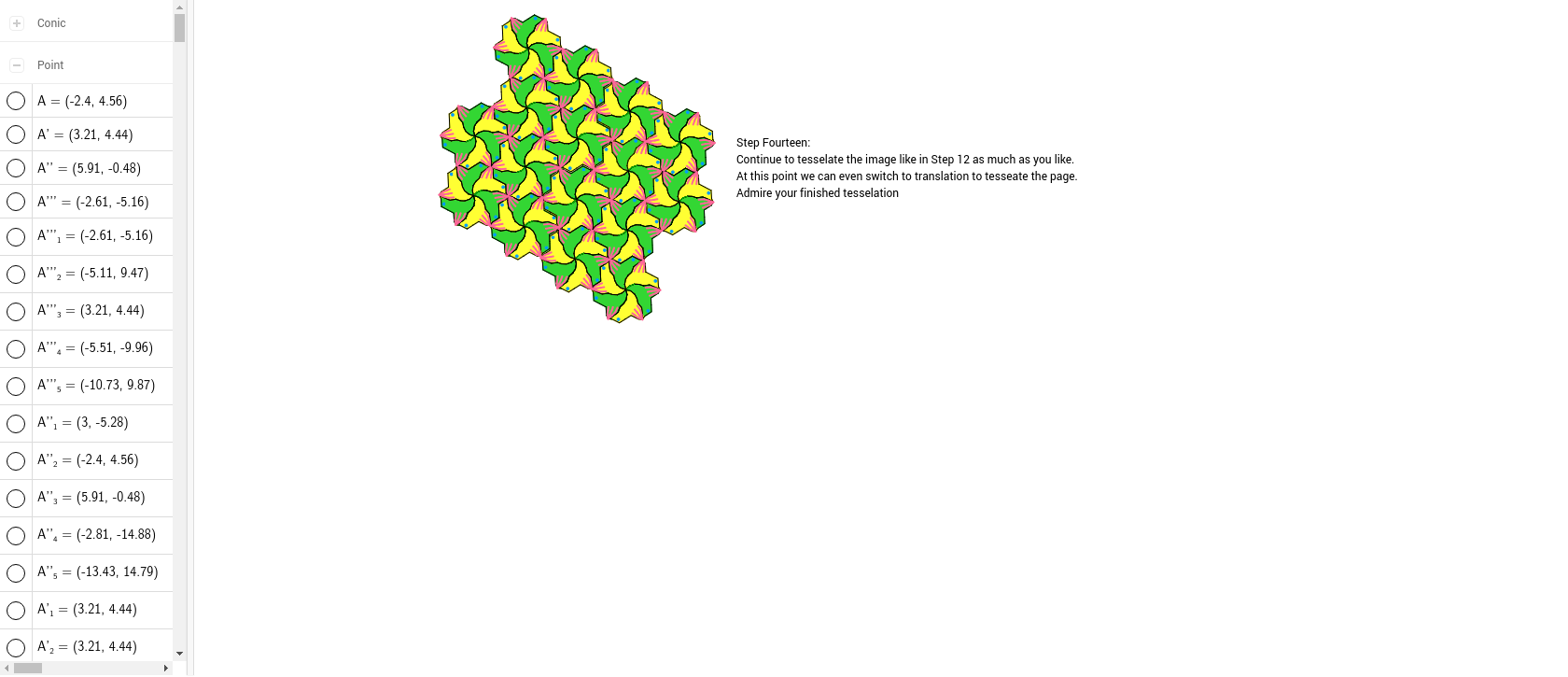

The three dimensional cube challenge made us think in different ways Here are the six faces of a cube - in no particular order:Ĭan you deduce where the faces are in relation to each other and record them on the net of this cube? We used rulers to draw the shapes we translated reflected and rotatedĬredynse showing translation reflection and rotation For example, tiled patterns on floors and some quilt patterns are actually tessellations.įollowing are some photos of our learning experiences:įirst of all we learnt about translation, reflection, and rotation.įirst of all we had a go at translating reflecting and rotating plane shapes on paper

The shapes must fit together so that there are no gaps or overlaps. Tessellation involves repeating plane shapes using translation, reflection and rotation.Ī tessellation is when a flat surface, like a floor or a piece of paper, is covered with repeating plane shapes. To rotate a plane shape we turn it around a central point. A mirror will show us how a shape reflects. We learnt that to translate a plane shape we slide it over. A side is a straight line that makes part of the shape, and a corner is where two sides meet. Different plane shapes have different attributes, such as the numbers of sides or corners. Room 3 have been learning to communicate and record the results of translations, reflections, and rotations on plane shapes.Ī plane shape is a two-dimensional (2D) or flat figure, such as a triangle, square, rectangle, or hexagon. 2017 Rooms 5-6 Technology Challenges with Rooms 15-16.2019 Athletics Certificates and Medal Recipients.

Room 10's Reconnecting and Testing Ourselves.Aratiatia go to Paradise Valley Springs.2020 I Wonder how the Pyramids are built.2021 Wairakei Interschool Athletics Champions.Tokarewa Opening and Celebration of Learning.


 0 kommentar(er)
0 kommentar(er)
